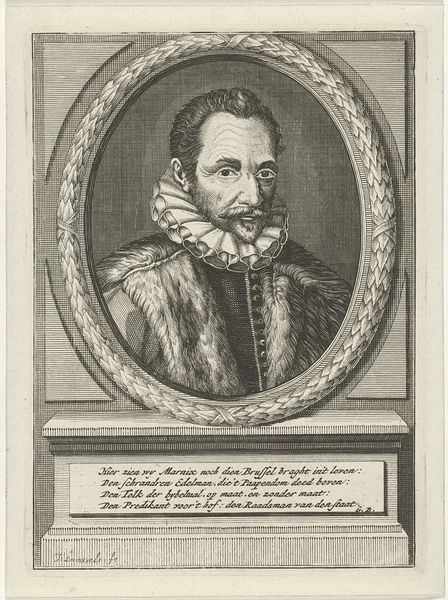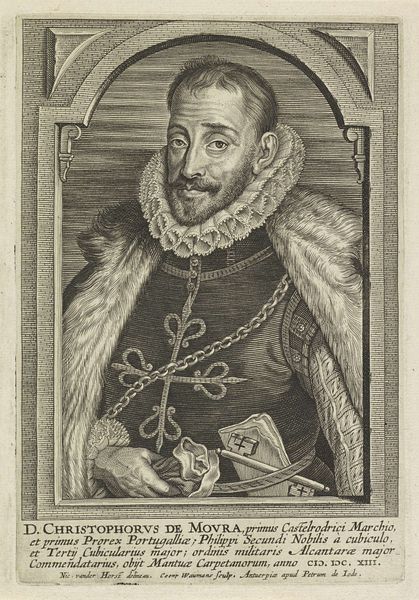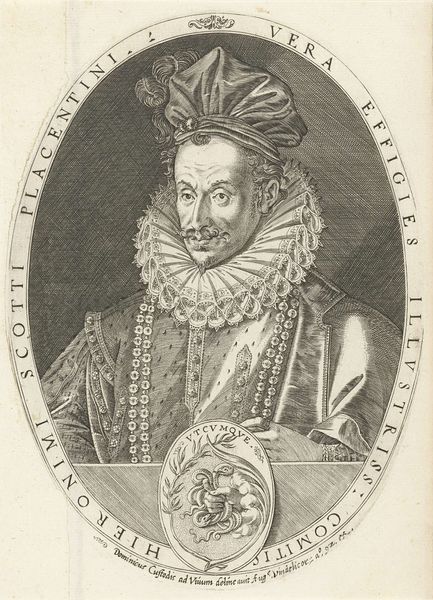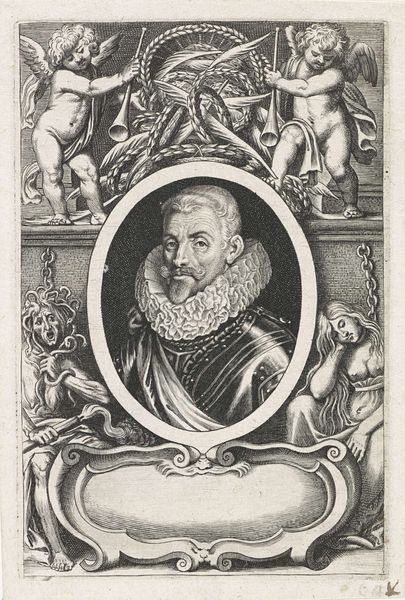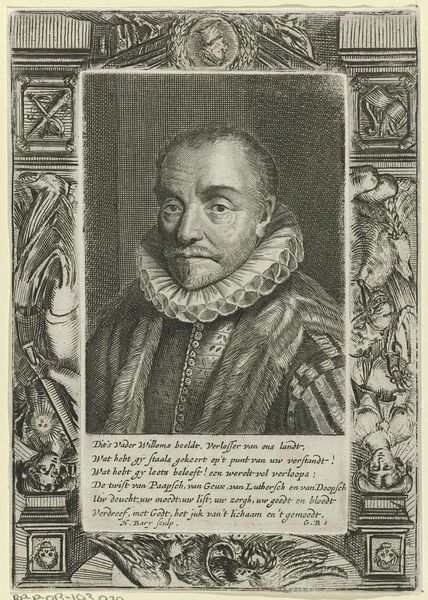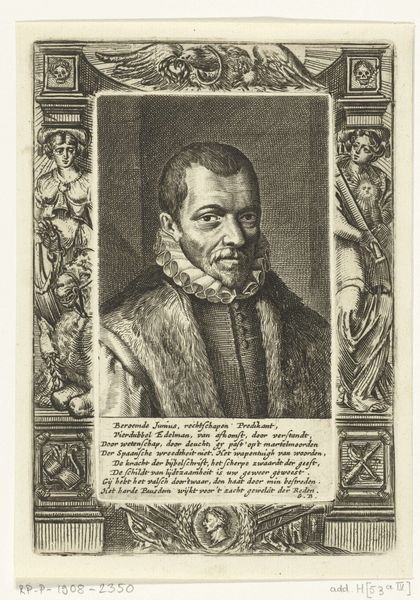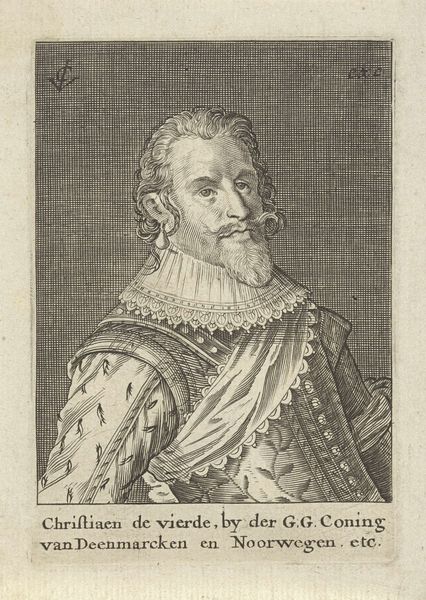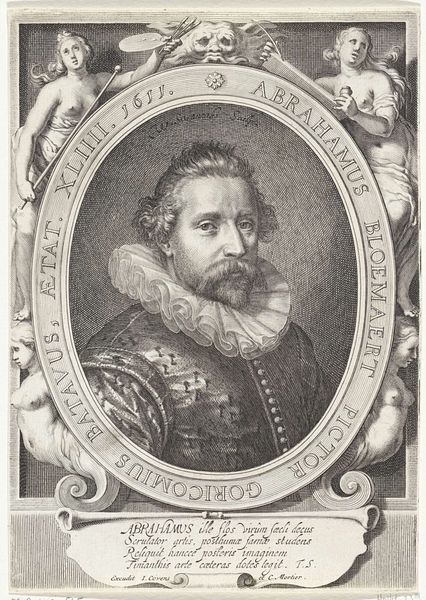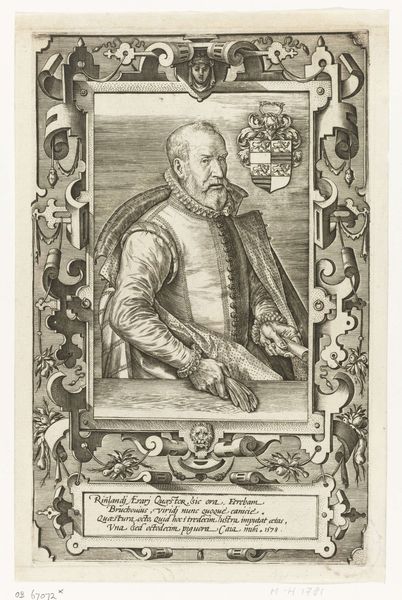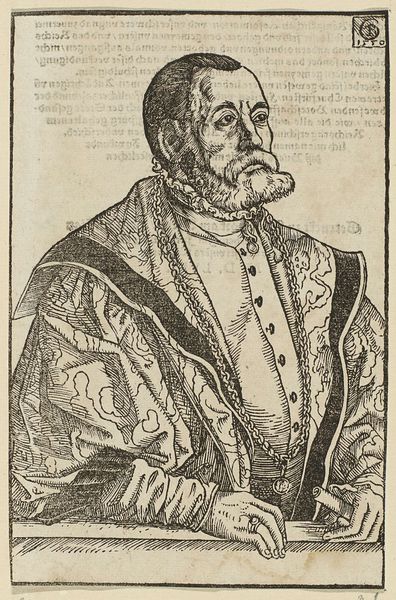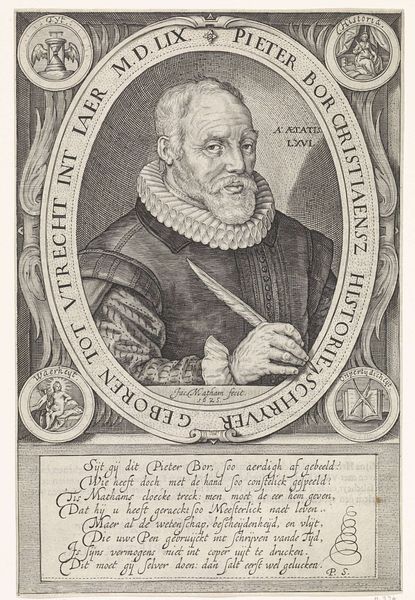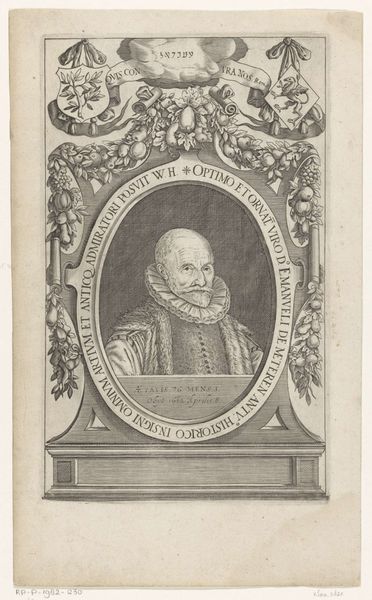
metal, engraving
#
portrait
#
baroque
#
metal
#
old engraving style
#
history-painting
#
engraving
Dimensions: height 168 mm, width 123 mm
Copyright: Rijks Museum: Open Domain
Editor: Here we have Hendrik Bary’s "Portret van Filips van Marnix van Sint-Aldegonde," an engraving on metal dating between 1657 and 1707. The detail is incredible; there’s so much packed into the composition beyond just the central figure. How do you interpret this work, considering its historical context? Curator: It’s crucial to understand that this isn’t just a portrait, but a carefully constructed representation meant to convey specific ideological positions. Consider the elaborate framing – the allegorical figures, the symbols of power. This was created in a time of great political and religious upheaval. How do you think Bary is using these visual elements to shape our understanding of Marnix? Editor: I see that the Latin text reinforces a specific image of him - an accomplished figure - a Bible translator - someone clearly important. It's like the text gives the viewer cues on how to view the image? Curator: Exactly. Marnix was a key figure in the Dutch Revolt, a staunch Calvinist intellectual and diplomat. Bary's engraving isn't a neutral depiction. Think about the function of portraiture during this period – it served to legitimize power and influence. To what extent do you think the artist would have wanted this artwork to appeal to different contemporary social classes and political views? Editor: I guess someone from the Catholic, pro-Spanish side, wouldn't really connect with all those religious symbolism. I would assume it was meant for an elite protestant group that revered Van Marnix. Curator: Precisely. It prompts us to consider art as a form of persuasive communication embedded in the religious and political climate of the time. Editor: Seeing it like this makes me think differently about portraits; I realize they can be so much more than simple likenesses. Curator: Absolutely, they are powerful vehicles for shaping historical narratives and solidifying social identities. Thinking of art in its context reveals underlying meanings.
Comments
No comments
Be the first to comment and join the conversation on the ultimate creative platform.
